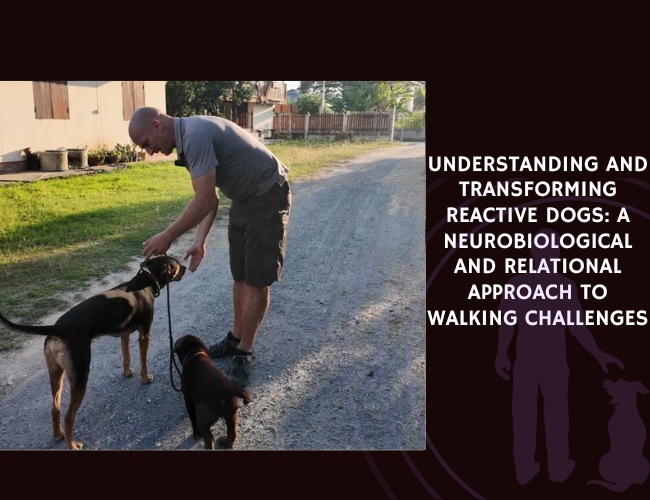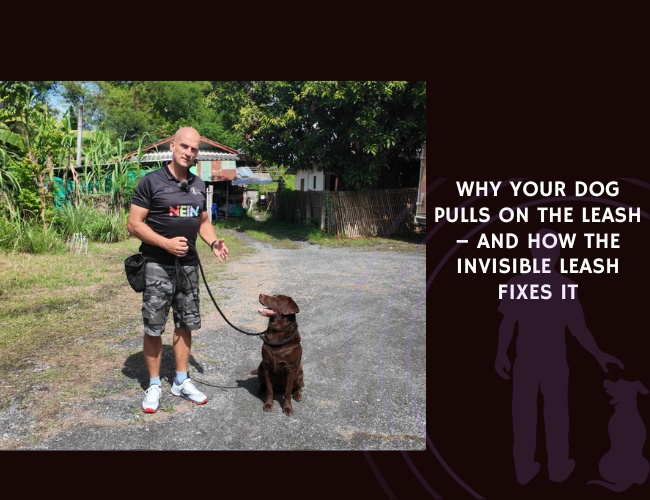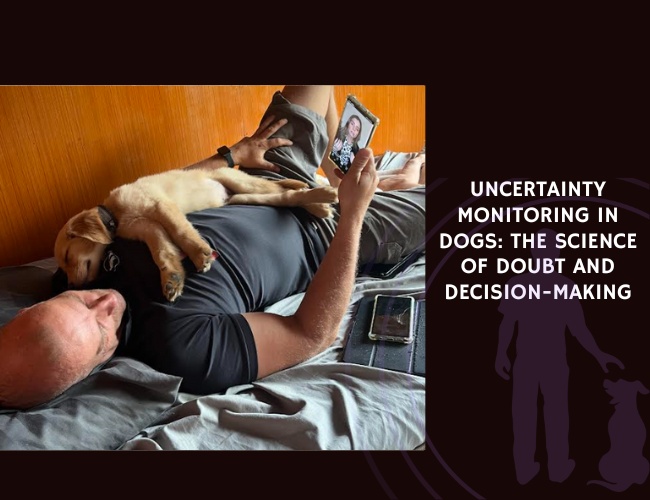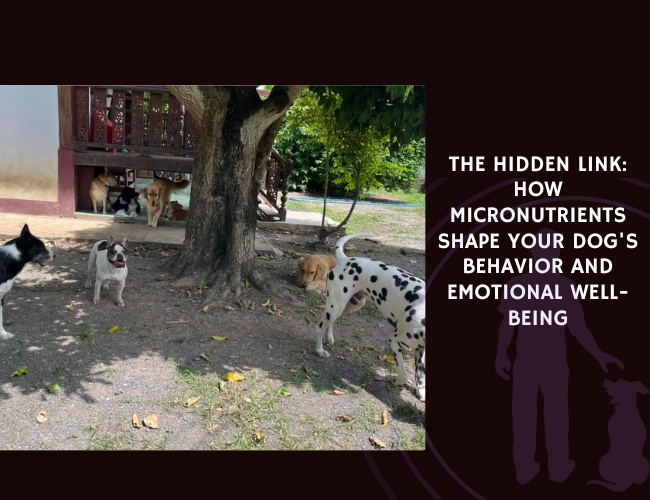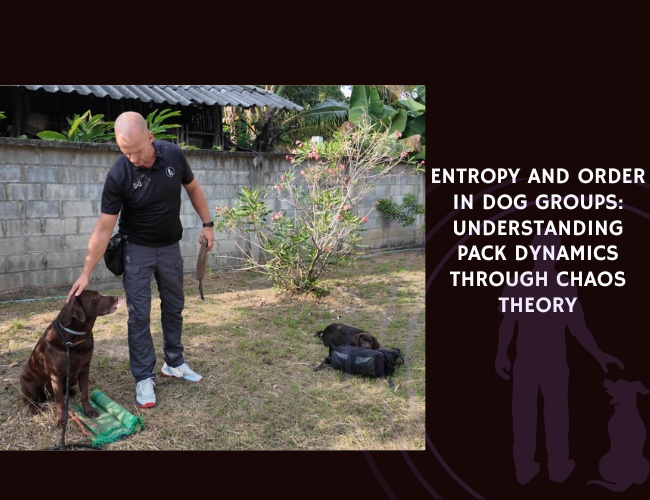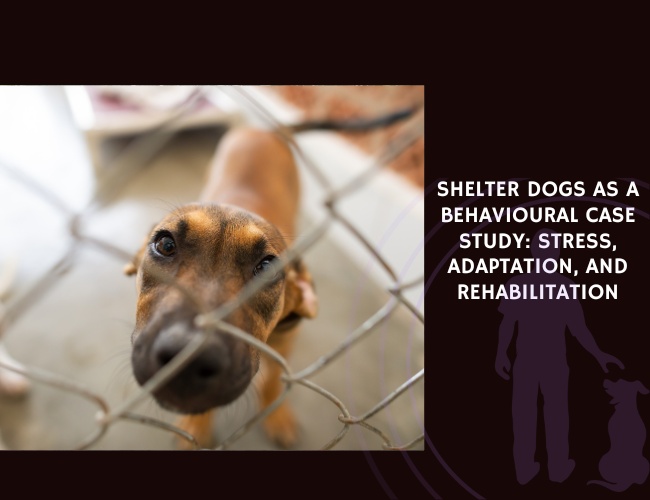Walking your dog should be one of life’s simple pleasures – a shared moment of connection, exercise, and exploration. Yet for many of us with reactive dogs, what should be a peaceful stroll becomes a source of stress, embarrassment, and even dread. If you’ve ever felt your heart race as another dog approaches, or found yourself crossing streets to avoid triggers, you’re not alone in this struggle. Let us guide you through understanding why your furry friend reacts this way and, more importantly, how you can transform these challenging walks into opportunities for deeper connection through a revolutionary approach that honors your dog’s instincts while building an invisible leash of trust.
The Hidden World of Canine Reactivity
What Reactivity Really Means
When we talk about reactivity, we’re describing something far more complex than just “bad behavior.” Your dog’s barking, lunging, or over-arousal on walks represents an intricate interplay of emotions, neurological responses, and learned behaviors. Did you know that what looks like aggression might actually be fear, frustration, or even excitement that has nowhere else to go?
The emotional spectrum of reactivity encompasses several key states that every owner should recognize:
- Fear-based reactivity – Explosive barking at approaching strangers, desperate attempts to flee, cowering behind you, or freeze responses when overwhelmed by perceived threats
- Frustration-based reactivity – Intense pulling toward other dogs they can’t greet, whining and spinning when prevented from investigating, redirected biting at the leash when desires are thwarted
- Arousal-based reactivity – Excessive jumping and inability to settle, loud vocalization from excitement rather than fear, loss of impulse control when overstimulated by environment
- Mixed emotional states – Often combining fear with frustration, or excitement tipping into anxiety, creating complex behavioral patterns that require careful observation to understand
The body language of stress tells a fascinating story if you know how to read it. A reactive dog might display multiple warning signs before erupting:
- Early warning signals – Lip licking when no food is present, excessive yawning despite being well-rested, sudden scratching or “wet dog” shakes when completely dry
- Escalating signs – Dilated pupils even in bright light, hackles raised along the spine, tail held rigidly high or tucked tightly under, rapid panting in cool weather
- Pre-explosion indicators – Hard staring at triggers, body weight shifted forward, muscles visibly tensed, stillness before the storm (freeze response preceding fight or flight)
- Post-reaction symptoms – Inability to take treats they normally love, continued scanning for threats, trembling or shaking, excessive water consumption
These aren’t signs of disobedience; they’re desperate communications from a dog whose internal world is in chaos.
The contextual nature of reactions means your dog isn’t being “stubborn” or “dominant.” Every reactive episode happens within a specific context that makes perfect sense from your dog’s perspective. Perhaps that particular corner is where they once encountered an off-leash dog, or maybe the sound of skateboards triggers memories of being startled as a puppy. Your dog’s behavior is never random – it’s always a logical response to their interpretation of the world around them. 🐾
The Neuroscience Behind the Bark
Your Dog’s Stress Highway
To truly understand reactivity, we need to explore what’s happening inside your dog’s brain during these intense moments. The amygdala, your dog’s emotional alarm system, plays a starring role in reactive behaviors. When this ancient brain structure detects potential danger, it hijacks the entire nervous system before the thinking brain can even process what’s happening.
Amygdala hypersensitivity creates a state of constant vigilance in reactive dogs. Research shows that heightened amygdala activity drives hyper-vigilance and exaggerated threat responses, making your dog see danger where none exists. This isn’t a choice – it’s a neurological response that happens faster than conscious thought. Imagine living in a world where every shadow could be a predator, every sound a threat. This is your reactive dog’s reality.
The stress hormone cascade floods your dog’s system within milliseconds of perceiving a trigger. Cortisol and adrenaline surge through their bloodstream, preparing them for fight or flight. Their heart rate skyrockets, muscles tense for action, and their ability to think clearly essentially shuts down. In this state, your dog literally cannot “listen” or “be good” – their brain has shifted into survival mode.
Serotonin’s calming influence – or lack thereof – significantly impacts reactive behavior. Dogs with reactive tendencies often show reduced serotonin transporter expression, meaning they struggle to regulate their emotional responses. This neurochemical imbalance makes it harder for them to shift from that sympathetic (fight/flight) state to the parasympathetic (rest and digest) state that allows for calm, rational responses. It’s like being stuck in high gear without the ability to downshift.
The Vicious Cycle of Chronic Stress
Living with reactivity means your dog exists in a state of chronic stress that fundamentally alters their brain chemistry and behavior patterns. The HPA (hypothalamic-pituitary-adrenal) axis, your dog’s central stress response system, becomes dysregulated through repeated activation.
Neural pathways of reactivity strengthen with each episode, creating superhighways for stress responses while the pathways for calm behavior become overgrown from disuse. Every reactive incident reinforces these patterns, making the next reaction more likely and more intense. Your dog’s brain literally rewires itself around these stress responses.
The physiological toll extends far beyond the moments of reactivity. Chronic stress compromises your dog’s immune system, disrupts their sleep patterns, affects their digestion, and can even accelerate aging. You might notice your reactive dog seems tired all the time, has recurring health issues, or struggles with other behavioral challenges. These aren’t separate problems – they’re all manifestations of a nervous system under constant siege.
Breaking the stress cycle requires understanding that punishment or suppression of reactive behaviors only adds more stress to an already overwhelmed system. When we force a reactive dog to “face their fears” without proper support, we’re essentially flooding an already overflowing stress bucket. This approach doesn’t teach coping skills; it often creates learned helplessness or escalates the reactivity. 🧠
Environmental Triggers and Their Impact
The Urban Jungle Through Your Dog’s Eyes
Modern life presents unique challenges for our canine companions. The urban environment, with its cacophony of sounds, smells, and visual stimuli, can overwhelm even the most balanced dog. For a reactive dog, every walk becomes a gauntlet of potential triggers.
Common urban triggers create a minefield of stress for reactive dogs. Understanding these triggers helps you anticipate and manage your dog’s responses:
- Moving triggers – Other dogs approaching on narrow sidewalks, joggers suddenly appearing from behind, cyclists whizzing past, skateboards with their rattling wheels
- Human-related triggers – Direct eye contact from strangers, unpredictable children running and screaming, people wearing hats or sunglasses, individuals using mobility aids like canes or wheelchairs
- Environmental sounds – Garbage trucks with hydraulic brakes, construction equipment, car horns and alarms, even the beeping of crosswalk signals
- Visual surprises – Flapping flags or banners, inflatable holiday decorations, shadows moving unexpectedly, reflections in windows or puddles
- Wildlife encounters – Squirrels darting across paths, birds suddenly taking flight, cats appearing in windows, even insects buzzing near your dog’s face
Each trigger activates that primal fear-frustration-arousal circuit we discussed earlier.
Sensory overload happens when multiple triggers stack on top of each other. Your dog might handle seeing one other dog, but when that’s combined with a loud truck passing by and a stranger approaching, their threshold is exceeded. This trigger stacking explains why your dog might seem “fine” one moment and “explosive” the next – it’s the cumulative effect of multiple stressors that pushes them over the edge.
The leash as both safety and trap creates a unique psychological dilemma for dogs. While the leash keeps them safe, it also prevents them from using their natural coping strategies – increasing distance, investigating at their own pace, or simply running away. This restriction can amplify frustration and make reactions more intense. The leash becomes a telegraph wire, transmitting your tension directly to your dog and their stress right back to you.
The Human Factor in Reactivity
Your role in your dog’s reactivity extends far beyond just holding the leash. The quality of your relationship, your emotional state, and your handling techniques all profoundly influence your dog’s behavior on walks.
Handler tension travels down the leash like electricity through a wire. When you spot a trigger and tense up, your dog immediately senses this change. Your shortened breath, tightened grip, and altered walking pace all signal danger to your dog. You might think you’re preparing to manage the situation, but your dog interprets these changes as confirmation that there’s something to worry about.
Social pressure and owner stress create additional layers of complexity. The embarrassment of having a “problem dog,” the judgment from other dog owners, and the constant vigilance required to avoid triggers all take a toll on your emotional wellbeing. This chronic stress affects your attachment to your dog and can lead to avoiding walks altogether, which only exacerbates the problem.
Predictability versus novelty in walking routes presents an interesting paradox. Familiar routes can reduce stress because your dog knows what to expect, but they can also create anticipatory anxiety if your dog has had negative experiences in specific locations. Novel routes might avoid known triggers but introduce the stress of unpredictability. Finding the right balance requires understanding your individual dog’s needs and stress patterns.
The Revolutionary NeuroBond Approach
Understanding the Philosophy of Connection
Traditional training methods often focus on suppressing reactive behaviors through control and correction. The NeuroBond approach takes a radically different path – one that honors your dog’s instincts while building a relationship so strong that your dog chooses connection over reaction.
Letting your dog be themselves forms the cornerstone of this philosophy. Instead of suppressing natural behaviors, we guide them toward constructive outcomes. Your dog’s instincts aren’t problems to be fixed; they’re communication tools and problem-solving strategies that we can redirect. When we allow dogs to be themselves within a framework of trust and clear boundaries, magic happens.
The dog as an operating system helps us understand that what we input determines the output. Every experience, every interaction, every moment of connection or disconnection programs your dog’s responses. Zero effort leads to zero outcome, but full effort – real, heartfelt effort toward connection – leads to transformation. Your dog learns only through lived experiences, not through theory or commands.
Connection over control revolutionizes how we approach reactivity. The goal isn’t to control your dog but to connect so deeply that they naturally choose to check in with you when uncertain. This isn’t about obedience; it’s about building such a strong emotional bond that your presence becomes your dog’s safe harbor in any storm.
Building the Invisible Leash
The concept of the invisible leash represents the ultimate goal of NeuroBond training – a connection so strong that physical restraint becomes almost unnecessary. Your dog stays close not because they must, but because they choose to.
Core components of the invisible leash include:
- Voluntary check-ins – Your dog naturally looks to you for guidance without being commanded, seeking eye contact during moments of uncertainty
- Emotional regulation – Your calm presence helps your dog return to baseline after arousal, creating a co-regulation partnership rather than dependent control
- Predictive communication – Your dog begins anticipating your movements and decisions, adjusting their behavior before you even give signals
- Distance elasticity – Your dog explores within comfortable range but naturally orbits back to you, maintaining connection without physical tethering
- Crisis trust – In overwhelming situations, your dog’s default becomes moving toward you rather than away, seeking safety in proximity rather than escape
First steps in bond building begin long before you tackle reactivity directly. Every moment you spend truly present with your dog strengthens this connection. It’s in the quiet moments of grooming, the playful games in your backyard, the gentle massage before bed. These seemingly unrelated activities build the emotional bank account you’ll draw from during challenging walks.
Teaching self-regulation through instinct means allowing your dog to find solutions through their own natural responses. The NeuroBond approach uses instinctive behaviors as teaching moments:
- The standing meditation – When your dog pulls, you simply stop and stand still, letting the leash teach that pulling doesn’t achieve forward movement
- Natural sitting – Dogs discovering on their own that sitting or lying down relieves leash pressure, which is immediately rewarded
- Sniffing as reset – Allowing investigative sniffing after calm behavior, using their natural desire to explore as reinforcement
- Distance regulation – Dogs learning they can control their comfort by moving closer to or further from you, building agency and confidence
- Calming signals – Recognizing and reinforcing when your dog offers natural calming behaviors like soft eyes, play bows, or shake-offs
This approach teaches your dog that they have agency, that their choices matter, and that good things happen when they think for themselves within the boundaries you’ve established.
The check-in as default behavior develops naturally when trust is established. Your dog learns to look at you, to seek your guidance, to find comfort in your presence. This isn’t trained through repetitive commands but cultivated through consistent, loving responses to your dog’s attempts at connection. Every time your dog glances at you during a walk, that’s a tiny request for reassurance – honor it with warmth and presence.

Practical Strategies for Transformation
Reframing Reactive Episodes
Every reactive episode is feedback, not failure. When your dog pulls, barks, or lunges, they’re communicating something important about their internal state and their relationship with you.
Reading the message in the behavior requires shifting from judgment to curiosity. Is your dog telling you they’re overwhelmed? That they don’t trust you to keep them safe? That they haven’t learned how to self-regulate in this situation? Each behavior is a message about connection, exposure, or unmet needs. When we stop seeing these behaviors as problems and start seeing them as communication, everything changes.
Creating new solutions together means becoming your dog’s partner in problem-solving rather than their controller. When your dog reacts to another dog, instead of yanking the leash and saying “no,” you might calmly increase distance while maintaining connection through your voice and presence. You’re showing your dog: “I see you’re struggling. Let me help you find a better way.”
Distance as a reward, not retreat reframes one of the most powerful tools in managing reactivity. Allowing your dog to increase distance from a trigger isn’t “letting them win” – it’s honoring their communication and reducing their stress. When your dog learns that you’ll help them maintain comfortable distance, they stop feeling the need to create it themselves through reactive behaviors.
Environmental Management with Heart
Managing your environment isn’t about avoiding all triggers forever; it’s about creating conditions where your dog can learn and grow.
Thoughtful route planning considers your dog’s current capabilities and gradually expands their comfort zone. Strategic planning makes every walk a success:
- Time of day considerations – Early morning walks when fewer triggers are present, avoiding peak dog-walking hours, choosing times when lighting helps your dog see clearly
- Environmental features to seek – Wide sidewalks allowing space for distance, parks with multiple exit routes, quiet residential streets with good visibility, areas with natural barriers like parked cars or hedges
- Routes to avoid initially – Dog parks or popular dog-walking areas, narrow paths with no escape routes, areas near schools during arrival/dismissal, locations of previous traumatic experiences
- Progressive challenge introduction – Starting with the quietest route and time, gradually adding one new element at a time, building confidence through successful experiences, always staying just below threshold
Start with walks during quieter times, choosing routes with natural escape routes and visual barriers. As your dog’s confidence grows, gradually introduce more challenging elements, always staying just below their threshold.
Using space creatively transforms ordinary walks into training opportunities. That parked car becomes a visual barrier, that driveway an escape route, that bench a place to practice calm observation. You’re not avoiding life; you’re strategically using your environment to support your dog’s learning.
The power of predictability in early stages cannot be overstated. When your dog knows what to expect, their baseline stress decreases, creating more capacity for learning. Consistent routes, consistent times, and consistent responses from you build a framework of safety within which your dog can begin to relax.
Tools and Techniques That Honor Instinct
The right equipment can support your training philosophy without suppressing your dog’s natural communication.
Long lines for controlled freedom allow your dog to make choices within safe boundaries. A 15-foot line in an appropriate space lets your dog practice decision-making while you maintain ultimate safety. This builds confidence and reinforces the idea that good things happen when they stay connected to you.
The standing meditation technique exemplifies the NeuroBond approach. When your dog pulls, instead of pulling back, you simply stop and stand still. Let the leash be their teacher. Most dogs will naturally sit or lie down when they realize pulling doesn’t work. This moment of self-regulation is immediately rewarded with forward movement or praise. You’re not commanding; you’re creating conditions where your dog discovers the solution themselves.
The Neurobiological Transformation
Rewiring the Reactive Brain
True transformation happens at the neurological level. Through consistent application of NeuroBond principles, you’re literally helping your dog’s brain build new neural pathways.
Neuroplasticity in action means every positive experience creates new neural connections. Each time your dog successfully checks in with you instead of reacting, that neural pathway strengthens. Over time, these new pathways can become stronger than the old reactive ones, making calm behavior the default rather than the exception.
Balancing the autonomic nervous system through relational training helps your dog develop the ability to shift between sympathetic and parasympathetic states. The deep trust built through NeuroBond work acts as an anchor, helping your dog return to calm more quickly after activation. You become their co-regulator, lending them your calm nervous system until they can regulate their own.
The role of oxytocin and attachment in healing cannot be understated. The bonding hormone oxytocin, released through positive interactions with you, has powerful anti-stress effects. It lowers cortisol, reduces blood pressure, and promotes feelings of safety and wellbeing. Every moment of genuine connection floods your dog’s system with this healing neurochemical.
Breaking the Stress Cycle
Healing from chronic reactivity requires addressing the underlying stress cycle that maintains the reactive patterns.
Creating safety from the inside out means building your dog’s internal sense of security rather than just managing external triggers. When your dog deeply trusts that you’ll keep them safe, that you understand their needs, and that you’ll help them navigate challenges, their baseline stress decreases dramatically.
The power of choice and agency in reducing stress is profound. Dogs who feel they have some control over their environment show lower stress markers than those who feel helpless. The NeuroBond approach consistently offers choices within boundaries, building your dog’s confidence in their ability to influence their world.
Recovery time as a healing tool acknowledges that after any stressful experience, your dog needs time to return to baseline. This might mean shorter walks, quiet time at home, or engaging in calming activities like sniffing or chewing. Respecting this recovery need prevents stress accumulation and supports long-term healing.
Overwhelmed. Triggered. Transformable.
Reactivity is communication. Barking, lunging, or freezing are not acts of defiance—they are survival strategies fueled by fear, frustration, or arousal. Each outburst is your dog’s way of saying, I can’t cope right now.
The brain drives the bark. An overactive amygdala and stress hormone surges hijack your dog’s system before thought can intervene. In this state, rational obedience is impossible—the nervous system is in control.
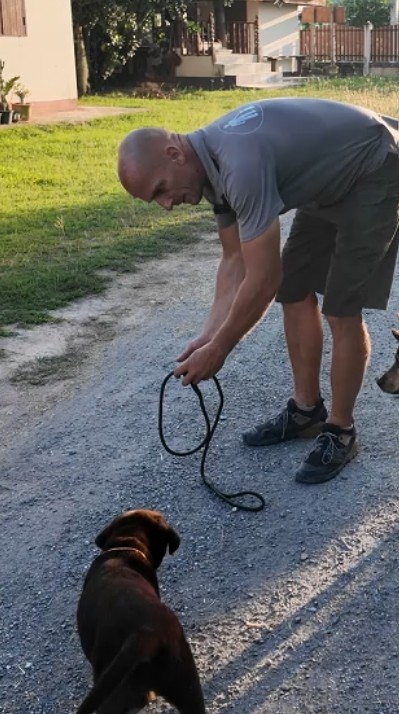

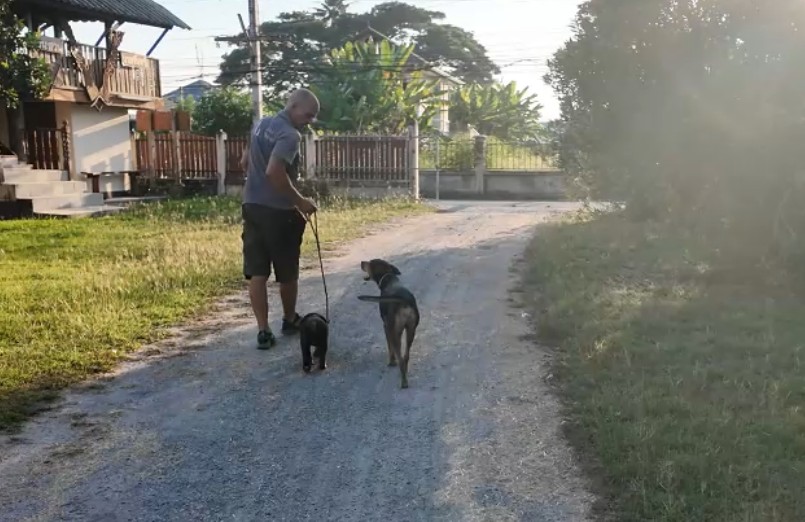
Connection rewrites the response. By honoring signals and building trust through calm, consistent engagement, you shift your dog from survival mode to safety. The invisible leash of relationship replaces fear with resilience.
Breed-Specific Reactivity Patterns
Understanding Your Dog’s Genetic Blueprint
Not all reactivity looks the same, and understanding your dog’s breed-specific tendencies can transform how you approach their challenges. Breed isn’t destiny, but it does provide a roadmap to understanding the particular flavor of reactivity your dog might display. Let us explore how different breeds manifest reactivity and how the NeuroBond approach honors these natural instincts rather than suppressing them.
Herding Breeds: The Movement Managers
Border Collies, Australian Shepherds, Cattle Dogs, and their cousins were bred for centuries to control movement. This isn’t just a job for them – it’s encoded in their DNA, woven into their neural pathways, and expressed in every fiber of their being.
Motion-triggered reactivity in herding breeds often looks like explosive reactions to bikes, skateboards, running children, or even leaves blowing in the wind. Your herding dog isn’t being “bad” when they lunge at moving objects; they’re experiencing an overwhelming biological urge to control movement that they cannot fulfill. This creates a perfect storm of frustration and arousal that explodes outward as reactivity.
The frustration of thwarted instinct runs particularly deep in these breeds. Imagine having an overwhelming compulsion to organize and control movement, but being perpetually prevented from doing so by a leash. This frustration can manifest as intense barking, spinning, nipping at heels, or redirected biting at the leash. Your Border Collie’s brain is literally screaming to do what it was designed to do, and the modern world rarely provides appropriate outlets.
NeuroBond adaptation for herding breeds focuses on channeling rather than suppressing these instincts. We might teach a “watch” behavior that allows controlled observation of movement, satisfying the surveillance instinct without the chase. We create games that involve movement control in appropriate contexts – herding balls in the backyard, organized play sessions where they can “manage” other dogs’ movements with permission. The invisible leash for a herding breed is built on trust that you’ll provide appropriate outlets for their instincts while helping them find calm in situations where control isn’t possible. 🧠
Guardian Breeds: The Protective Partners
German Shepherds, Rottweilers, Dobermans, and Mastiffs carry the weight of centuries of selective breeding for protection and territorial awareness. Their reactivity often stems from a deep-seated need to assess and respond to potential threats to their family unit.
Territorial reactivity in guardian breeds isn’t aggression for aggression’s sake – it’s a carefully honed response to perceived boundary violations. Your German Shepherd who barks at every passerby isn’t trying to be difficult; they’re following an ancient protocol that says “unknown entities near our territory must be announced and assessed.” This vigilance, while valuable in working contexts, becomes problematic when your territory includes a busy suburban sidewalk.
The burden of responsibility weighs heavily on guardian breeds. Many reactive guardians are actually stressed by feeling solely responsible for security. When they don’t trust their human to handle potential threats, they feel compelled to take charge, leading to increased reactivity. This isn’t dominance – it’s anxiety about unfulfilled responsibility.
NeuroBond adaptation for guardian breeds centers on partnership in protection. We acknowledge their guardian instincts while clearly communicating that you’ve got security handled. This might involve teaching a formal “check it out” protocol where they alert you to concerns and you investigate together, or establishing clear “on duty” and “off duty” signals. The invisible leash with a guardian breed is built on mutual respect and shared responsibility – they trust you to be the primary decision-maker while you honor their need to be aware and involved.
Terriers: The Tenacious Hunters
From tiny Yorkies to powerful Pit Bulls, terriers were bred for independent decision-making and explosive action when pursuing prey. This combination creates a unique reactivity profile that can catch owners off guard.
Prey-drive reactivity in terriers can go from zero to sixty in a heartbeat. That squirrel, cat, or small dog triggers an ancestral hunting sequence so powerful it can seem like your sweet terrier has been possessed. This isn’t a choice or a training failure – it’s a neurological hijacking by instincts that once meant survival.
The independence factor makes terrier reactivity particularly challenging. Unlike breeds developed to work closely with humans, terriers were designed to work alone in tunnels and tight spaces, making quick, independent decisions. This means they’re less likely to naturally check in with you when aroused and more likely to act first, think later.
NeuroBond adaptation for terriers respects their independence while building voluntary connection. We might use games that satisfy the hunting sequence in controlled ways – “find it” games with toys, flirt pole play that allows the full grab-shake-kill sequence with appropriate objects. The invisible leash with a terrier is built through making connection more rewarding than independent action, not through force or suppression. We honor their tenacity while channeling it constructively.
Toy Breeds: The Misunderstood Mighty
Chihuahuas, Pomeranians, Maltese, and other toy breeds often display intense reactivity that’s dismissed or even encouraged because of their size. “Small dog syndrome” isn’t a personality flaw – it’s often a rational response to a world that doesn’t respect their boundaries.
Fear-based reactivity in toy breeds makes perfect sense when you consider their perspective. At 6 pounds, every other dog is a potential predator, every footstep a crushing threat. Their explosive displays are often desperate attempts to create distance from perceived dangers. When people laugh at or dismiss their warnings, it only reinforces their belief that they must escalate to be heard.
The protection paradox affects many toy breeds. Owners, meaning well, constantly pick them up, carry them, and shield them from normal dog interactions. This prevents them from developing confidence and social skills, creating a vicious cycle where protection increases fearfulness, which triggers more protective handling.
NeuroBond adaptation for toy breeds takes their concerns seriously while building confidence. We never force interactions or dismiss their communications as “cute.” Instead, we create safe opportunities for them to make choices, honor their need for distance, and gradually build positive associations. The invisible leash with a toy breed is built on respect for their autonomy and validation of their experiences – they’re not accessories but full dogs with real emotions and needs.
Honoring Instinct While Building Connection
Understanding breed-specific reactivity patterns doesn’t mean accepting them as unchangeable fate. Instead, it provides a roadmap for building the NeuroBond in ways that honor your dog’s genetic heritage while creating new possibilities for calm and connection.
Breed-appropriate outlets that reduce reactivity:
- For herding breeds – Treibball (urban herding with exercise balls), structured “find the flock” games with toys, permission-based movement control games, agility or rally obedience for mental stimulation
- For guardian breeds – Structured “patrol” walks with checking responsibilities, nose work to satisfy investigation needs, designated “watch” times from windows or yards, confidence-building exercises in controlled environments
- For terriers – Flirt pole play allowing full prey sequence, barn hunt or earthdog activities, intensive sniffing games and puzzle toys, digging boxes or designated destruction toys
- For toy breeds – Elevated platforms for confident observation, choice-based socialization at their own pace, confidence courses at their size level, respect for their personal space preferences
Working with, not against, genetics means finding creative outlets for breed-specific needs. Your reactive herding dog might become calm on walks after a morning session moving sheep (or sheep balls). Your guardian breed might relax once given a structured “job” that satisfies their protective instincts. Your terrier might walk beautifully after a satisfying scent work session.
The individual within the breed remains paramount. While breed tendencies provide useful insights, every dog is unique. Your Border Collie might have lower herding drive than typical, or your Rottweiler might be more interested in butterflies than guarding. The NeuroBond approach always responds to the individual dog in front of us, using breed knowledge as a starting point, not a rigid prescription. 🐾
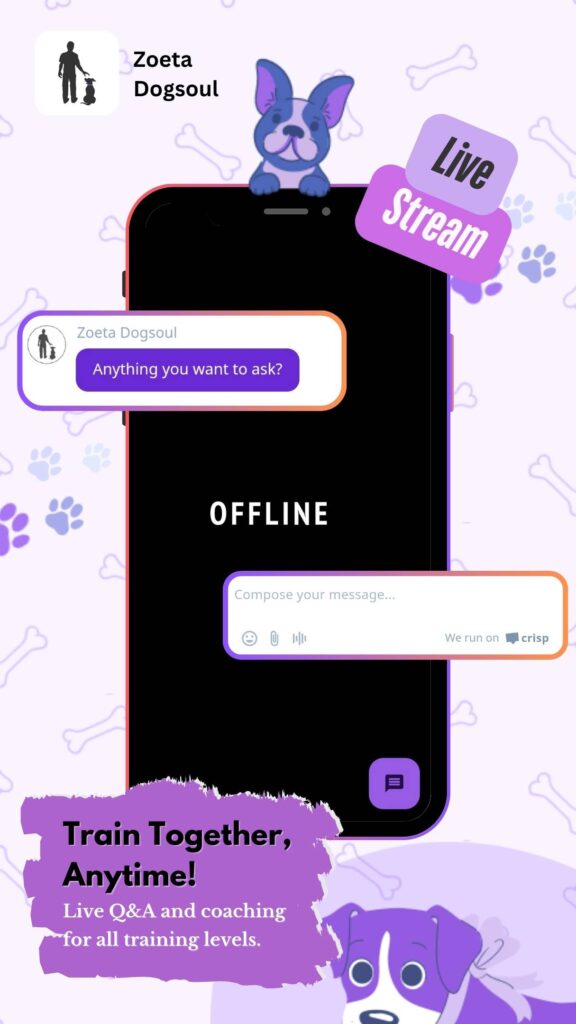
Age-Related Considerations
The Journey Through Life Stages
Reactivity doesn’t exist in a vacuum – it develops, changes, and evolves throughout your dog’s life. Understanding how age influences reactive behavior helps us adapt the NeuroBond approach to meet your dog exactly where they are in their developmental journey.
Puppy Reactivity: Foundation Setting
The puppy months are both an opportunity and a vulnerability when it comes to reactivity. What happens during this critical period can set the stage for a lifetime of either confidence or fear.
Early fear periods occur predictably around 8-11 weeks and again around 4-6 months. During these windows, your puppy’s brain is essentially asking, “What in this world should I be afraid of?” A single scary experience during a fear period can create lasting reactive patterns. That one aggressive dog at the park, that terrifying garbage truck, that overwhelming visit to the pet store – these can become blueprints for future reactivity.
Socialization windows and their limits present a paradox many puppy owners face. Yes, early socialization is crucial, but overwhelming a sensitive puppy with too much, too fast can actually create reactivity. The goal isn’t to expose your puppy to everything but to create positive associations with novel experiences at a pace they can handle. Quality over quantity becomes the guiding principle.
Prevention through NeuroBond principles starts from day one with these foundational practices:
- Quality over quantity socialization – Three positive experiences trump thirty overwhelming ones, focusing on calm observation rather than forced interaction
- Building resilience through choice – Allowing puppies to approach or retreat at will, never forcing interactions that cause stress signals, honoring their communication about comfort levels
- Creating positive associations – Pairing new experiences with wonderful outcomes, using food, play, or comfort as bridges to confidence, celebrating brave choices rather than forcing courage
- Establishing trust early – Being the safe haven during fear periods, responding consistently to distress signals, proving through action that you’ll protect them
Instead of flooding your puppy with experiences, we focus on building that foundational trust and connection. Every positive interaction, every moment of safety you provide, every time you honor their communication about being overwhelmed – these build a reservoir of resilience. We’re not just preventing reactivity; we’re building a nervous system that can handle challenge because it trusts in the security of your bond.
Adolescent Dogs: The Teenage Tornado
If puppyhood is about building foundations, adolescence is about testing them. This phase, typically from 6-18 months depending on breed, brings unique challenges that can suddenly trigger reactivity in previously confident dogs.
Hormonal hurricanes reshape your adolescent dog’s brain and behavior. Testosterone and estrogen don’t just affect sexual behavior – they influence confidence, risk assessment, and social relationships. Your previously friendly male dog might suddenly become reactive to other males. Your female might become more selective about dog friends. This isn’t regression; it’s a normal developmental process that requires patience and understanding.
The secondary fear period catches many owners off guard. Somewhere between 6-14 months, many dogs experience another fear period where previously familiar things suddenly become scary. Your confident puppy might suddenly bark at trash cans or become reactive to strangers. This isn’t a training failure – it’s a developmental phase that requires steady, calm support rather than intensive correction.
NeuroBond through the teenage phase maintains consistency while allowing for increased autonomy. Adolescent dogs need to test boundaries and make choices, but within a framework of safety and connection. We might increase distance from triggers during this sensitive period, focus more on building confidence through successful experiences, and resist the urge to “fix” every reactive display. The invisible leash during adolescence is built on patience and faith that this phase will pass, and your consistent, calm presence will guide them through.
Senior Dogs: The Golden Years’ Challenges
Reactivity in older dogs often has different roots than in younger animals, requiring a particularly gentle and understanding approach.
Pain-related reactivity becomes increasingly common as dogs age. Arthritis, dental disease, vision changes, or other age-related discomforts can suddenly make a previously social dog reactive. They’re not becoming “grumpy” – they’re protecting themselves from pain. That dog who now snaps when approached might be anticipating the jarring of arthritic joints. Understanding this transforms our response from correction to compassion.
Cognitive changes and confusion can manifest as reactivity in senior dogs. Canine cognitive dysfunction (similar to dementia in humans) can cause increased anxiety, confusion about familiar people or places, and reactive responses to normal stimuli. Your senior dog might bark at family members they’ve known for years or become reactive to shadows and reflections. This isn’t behavioral regression – it’s neurological change requiring medical support alongside behavioral adaptation.
Sensory decline’s role in senior reactivity often goes unrecognized. As hearing and vision fade, dogs lose their ability to accurately assess their environment. They might react explosively to “suddenly appearing” people who they simply didn’t hear approaching. The world becomes unpredictable and therefore threatening when senses that once provided clear information become unreliable.
NeuroBond adaptation for seniors prioritizes comfort and predictability. We might switch from walks in busy areas to quiet, familiar routes. We increase our verbal communication to compensate for vision loss, use touch to announce our presence for hearing-impaired dogs, and create predictable routines that reduce anxiety. The invisible leash with a senior dog is built on decades of trust, adapted to honor their changing needs while maintaining dignity and quality of life. 🧡
Developmental Sensitivity in Practice
Understanding these life stages transforms how we interpret and respond to reactivity. The same behavior – barking at another dog – might require completely different responses in a fear-period puppy versus a pain-affected senior.
Adjusting expectations by age means recognizing that progress isn’t always linear. Your adolescent might seem to regress despite your best efforts – this is normal. Your senior might develop new reactive patterns – this needs investigation, not punishment. Your puppy might seem fearless one day and reactive the next – they’re figuring out their world.
The long view of development reminds us that reactivity isn’t fixed. The reactive adolescent often mellows with maturity. The fearful puppy can become a confident adult with proper support. Even senior dogs can find new peace through adapted management. The NeuroBond approach sees each life stage not as a problem to solve but as a phase to support with understanding and connection.
The Human-Canine Partnership
Transforming the Owner Experience
The journey of healing a reactive dog transforms you as much as it transforms them. This process asks you to develop new skills, challenge old beliefs, and open your heart in ways you might never have expected.
From handler to partner represents a fundamental shift in how you see your role. You’re not your dog’s boss or trainer; you’re their secure base, their translator, their advocate. This shift from dominance to partnership creates space for genuine connection and mutual respect.
Managing your own emotional regulation becomes crucial for your dog’s healing. Learning to breathe through your anxiety, to stay present despite embarrassment, to maintain calm in the face of judgment – these skills benefit every area of your life, not just dog walking. Your reactive dog becomes your teacher in emotional regulation and mindfulness.
Finding community and support helps combat the isolation that often comes with having a reactive dog. Connecting with others who understand this journey, whether through online groups or local support networks, provides both practical advice and emotional validation. You’re not alone in this struggle, and there’s no shame in having a dog who needs extra support. 🧡
Creating Lasting Change
Real transformation doesn’t happen overnight. It’s a journey of small moments, incremental progress, and occasional setbacks.
Measuring progress differently means celebrating the tiny victories others might not even notice:
- Micro-improvements that matter – A half-second of eye contact before reacting, barking for 10 seconds instead of 30, recovering in 5 minutes instead of 20, choosing to look at you even once during a walk
- Quality of life indicators – Sleeping more soundly after walks, taking treats in previously scary locations, offering play behaviors on walks, showing curiosity rather than just vigilance
- Relationship markers – Increased voluntary check-ins, seeking comfort during stress, offering calming signals to you, choosing proximity when given freedom
- Physiological changes – Softer body language overall, lower baseline arousal, quicker return to normal breathing, ability to eat in more locations
Document these small wins; they add up to massive change. That brief moment of eye contact before a reaction, the slightly lower intensity of a bark, the quicker recovery time – these are all signs of a brain rewiring itself.
The compound effect of connection means that every positive interaction builds on the last. Like interest in a bank account, the benefits of consistent connection compound over time. What seems like slow progress in the beginning accelerates as the foundation strengthens.
Integration into daily life ensures that the principles of NeuroBond become not just a training method but a way of being with your dog. The invisible leash isn’t built only on walks; it’s strengthened in every interaction throughout your day. The way you greet your dog in the morning, how you play together, the quiet moments of companionship – all contribute to the transformation.
The Path Forward
Your Journey Starts Now
Understanding the science behind reactivity and embracing the NeuroBond philosophy opens a new chapter in your relationship with your dog. This isn’t just about fixing walks; it’s about creating a partnership based on mutual trust, respect, and deep understanding.
Start where you are with compassion for both yourself and your dog. You’re both doing the best you can with the tools and knowledge you have. Now that you understand the neurobiology behind the behavior and have new tools rooted in connection rather than control, you can begin making different choices.
Trust the process even when progress feels slow. Remember that you’re not just changing behaviors; you’re rewiring brains, healing trauma, and building entirely new patterns of relating. This depth of change takes time, but it creates results that last a lifetime.
Embrace the journey as an opportunity for growth. Your reactive dog isn’t broken; they’re sensitive, communicative, and desperately wanting to feel safe. As you help them heal, you’ll discover reserves of patience, creativity, and love you didn’t know you had. The challenges of reactivity, approached with the right understanding and tools, become gateways to a deeper, more authentic relationship with your canine companion.
Conclusion: The Invisible Leash of Trust
The struggle with reactive dogs on walks reflects not a failure of training but a cry for deeper connection and understanding. Through the lens of neurobiology, we see that reactivity emerges from dysregulated stress systems, hypersensitive alarm circuits, and the frustration of natural instincts constrained by modern life. Through the wisdom of the NeuroBond approach, we discover that healing happens not through suppression and control but through connection, choice, and honoring our dogs’ inherent wisdom.
When we shift from seeing reactivity as a problem to solve to viewing it as communication to understand, everything changes. When we move from trying to control our dogs to connecting with them so deeply that they choose to stay close, we create something magical – an invisible leash woven from trust, understanding, and mutual respect.
Your reactive dog has brought you to this moment, to this understanding, to this opportunity for transformation. They’re not asking you to be perfect; they’re asking you to be present. They’re not demanding that you have all the answers; they’re inviting you to discover solutions together. In this partnership, both of you will grow, heal, and ultimately find that what began as a problem has become a profound gift – the gift of true connection.
The path ahead won’t always be easy, but it will be worth it. Every small step toward connection, every moment of choosing relationship over control, every instance of honoring your dog’s communication rather than suppressing it, builds toward a future where walks become what they were always meant to be – a celebration of the extraordinary bond between human and dog. The invisible leash isn’t just a training goal; it’s a metaphor for the kind of relationship that transcends tools and techniques, rooted instead in the deepest form of love – the love that sees, understands, accepts, and gently guides toward growth. 🐾

